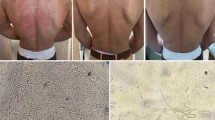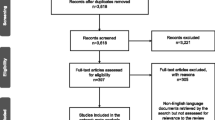Abstract
Objective: To compare the costs and effectiveness of 2 oral antifungal treatment regimens in patients with dermatophyte toenail onychomycosis.
Design and methods: A cost-effectiveness analysis using a model based on data from the Lamisil versus Itraconazole in Onychomycosis (L.I.ON.) study, a randomised controlled trial comparing continuous terbinafine with intermittent itraconazole. The trial included 4 treatment arms: terbinafine 250 mg/day for 12 or 16 weeks (T12, T16) and itraconazole 400 mg/day for 1 week in every 4 weeks for 12 or 16 weeks (I3, I4). Cost calculations for 6 countries (Finland, Germany, Iceland, Italy, The Netherlands, UK) included costs for medication, physician visits, laboratory tests, management of adverse events and management of relapse. Effectiveness was based on complete cure rates (mycological cure plus 100% toenail clearing). Costs per complete cure were determined and both average and incremental cost-effectiveness ratios were calculated.
Perspective: Healthcare system.
Main outcome measures and results: In the L.I.ON. study, terbinafine was seen to be more effective than itraconazole (cure rates, 45.8 vs 23.4%). In most comparisons (5 of the 6 countries), the costs of T12 were statistically significantly lower than those of I3 [range: −37 to −173 euros (EUR); 1998 values; 1.172 US dollars = EUR1], indicating that T12 was the dominant strategy (i.e. less expensive and more effective). One exception (Finland) showed an incremental cost-effectiveness ratio of EUR524 per additional cure. In the other 5 countries, T16 and I4 were essentially equal in cost, but the greater effectiveness of T16 (cure rates, 55.1 vs 25.9%) resulted in a situation of extended dominance.
Conclusion: From a healthcare system perspective, continuous terbinafine is less costly and more effective than intermittent itraconazole in the treatment of dermatophyte toenail onychomycosis.








Similar content being viewed by others
References
Bergman W, Rutten F. Orale behandeling van onychomycose van de teennagels: vergelijking van kosteneffectiviteit van griseofulvine, itraconazol, ketoconazol en terbinafine. Ned Tijdschr Geneeskd 1994; 138: 2346–50
Wilson N, White S. Oral antifungal agents for onychomycosis [letter]. Lancet 1998; 351: 1516
Phillips P. New drugs for the nail fungus prevalent in the elderly. JAMA 1996; 276: 12–3
Scher R. Onychomycosis is more than a cosmetic problem. Br J Dermatol 1994; 130 Suppl. 43: 15
Gupta A. Pharmacoeconomic analysis of oral antifungal therapies used to treat dermatophyte onychomycosis of the toenails: a US analysis. Pharmacoeconomics 1998; 13: 243–56
Arikian SR, Einarson TR, Kobelt-Nguyen G, et al. A multinational pharmacoeconomic analysis of oral therapies for onychomycosis. Br J Dermatol 1994; 130 Suppl. 43: 35–44
van Doorslaer EKA, Tormans G, Gupta AK, et al. Economic evaluation of antifungal agents in the treatment of toenail onychomycosis in Germany. Dermatology 1996; 193: 239–44
Einarson TR, Arikian SR, Shear NH, et al. Cost-effectiveness analysis for onychomycosis therapy in Canada from a government perspective. Br J Dermatol 1994; 130 Suppl. 43: 32–4
Marchetti A, Piech CT, McGhan WF, et al. Pharmacoeconomic analysis of oral therapies for onychomycosis: a US model. Clin Ther 1996; 18: 757–77
Bootman J. Cost-effectiveness of two new treatments for onychomycosis: an analysis of two comparative clinical trials. J Am Acad Dermatol 1998; 38: 69–72
Havu V, Brandt H, Heikkilä H, et al. A double-blind, randomized study comparing itraconazole pulse therapy with continuous dosing for the treatment of toe-nail onychomycosis. Br J Dermatol 1997; 136: 230–4
Evans EGV, Sigurgeirsson B, for the L.I.ON. Study Group. Double-blind, randomised study of continuous terbinafine compared with intermittent itraconazole in the treatment of toenail onychomycosis. BMJ 1999; 318: 1031–5
Efron B, Tibshirani R. An introduction to the bootstrap. New York (NY): Chapman and Hill, 1993
Al MJ, van Hout BA, Michel BC, et al. Sample size calculations in economic evaluations. Health Econ 1998; 7: 327–35
Acknowledgements
This study was financially supported by Novartis Pharma (Switzerland).
Author information
Authors and Affiliations
Corresponding author
Rights and permissions
About this article
Cite this article
Jansen, R., Redekop, W.K. & Rutten, F.F.H. Cost Effectiveness of Continuous Terbinafine Compared with Intermittent Itraconazole in the Treatment of Dermatophyte Toenail Onychomycosis. Pharmacoeconomics 19, 401–410 (2001). https://doi.org/10.2165/00019053-200119040-00007
Published:
Issue Date:
DOI: https://doi.org/10.2165/00019053-200119040-00007




